Calligraphy, the writing of figures, is definitely an art that has developed over hundreds of years in China. The kodak playtouch camcorder introduces students for this ancient art through step-by-step instructions on writing Chinese figures. As each character is composed by a number of single brushstrokes, a student will quickly learn how to recognize these as aspects of the finished character and also the written Oriental will end up significantly less forbidding.
The exercises within this unit also let the students to see the rhythm and feeling of design in Chinese writing, therefore getting a pleasing dimension for their knowledge of china language.
A. What’s calligraphy?
The term “calligraphy” is initially a Greek word meaning “beautiful writing.” We usually affiliate this word with higher penmanship, handwriting that’s neat, legible and engaging. In China, however, calligraphy is considered being an art from by itself and it is respected and displayed in museums just like works of art are.
Furthermore, calligraphy is frequently accustomed to decorate articles every day use. For example, when you attend a Chinese restaurant if you notice the dishes are colored with figures in addition to with colorful pictures. Even around the ordinary, everyday degree of existence, beautiful writing is appreciated.
B. Some Types of Chinese Calligraphy
1. Oracle Inscriptions
The first known types of Chinese writing are inscriptions on animal bones and turtle shells dating in the 13th century B.C. throughout the Shang empire. These inscriptions were the records of divinations produced by heating the bones or shells more than a fire until cracks made an appearance in it. Predictions were read make up the pattern from the cracks and recorded on the bone or covering. The figure below shows an oracle created around the plastron of the turtle. Observe that the figures are comprised of fairly straight lines with sharp endings. (Do you consider these functions may have something related to the type of materials used?)
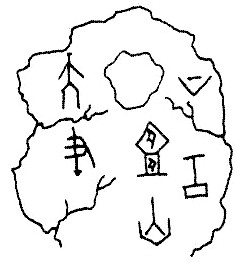
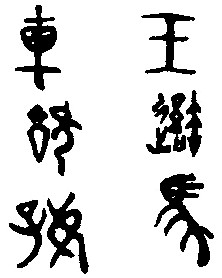
2. The Truly Amazing Seal Style
This term covers an extensive selection of styles which arrived to use throughout the Chou empire (1122-221 B.C.). When compared to Oracle Style, these figures tend to be more rounded in the corners and show a combination of the years strokes. Most of the surviving types of this style, like the one below, originate from inscriptions which were cast on bronze vessels. At the end from the first column may be the pictograph (picture-word) for “house.” The very first word within the second column is another pictograph. It shows “carriage” from the bird’s eye view — a compartment with two wheels on each side, became a member of by an axle.
3. The Little Seal Style
In 221 B.C. the very first unifier and emperor of China purchased the writing system be standardized and established the way of writing of his native condition, Ch’in, because the model script from the empire. The round contours of the script, later referred to as Small Seal Style, allow it to be like the Great Seal Style. However, the line is all a level thickness and also the figures are extremely elongated so they may be imagined to suit nicely right into a vertical rectangle.
4. Clerical Style
Throughout the Han empire (207 B.C.-220 A.D), the little Seal Style was surpassed in recognition by another script that could be written more rapidly and simply having a brush. This style grew to become referred to as Clerical Style because a lot of examples of this script put together on official documents for example government records of taxes, census records, deeds, etc. Spot the upward tilt in the finish from the horizontal strokes which provides each character a fluid quality. This style may be the forerunner from the Regular Style which we’ll take a look at next.
5. Regular Style
The Standard Style preserves the Clerical script’s precision and modulation of line width but is less formal and high to look at. Observe that the lines of horizontal type generally slope upwards but don’t possess the final tilt in the finish from the stroke that the Clerical Style has. Note additionally that the vertical line is stored strictly vertical and don’t lean from the core character as with the Clerical Style. As students of calligraphy have typically mastered this style before attempting others, we’ll also employ it as being our model in mastering to create Chinese.
6. Running Style
As suggested by its name, this style enables for additional freedom and fluidity in movement. The strokes and dots which are written individually within the Regular Style are became a member of together in one sweep from the brush, thus producing a sense of speed and fluency.
Styles 1 through 4 are known as “archaic” styles since they’re no more being used, aside from special artistic purposes. Styles 5 and 6 are generally in keeping use today and therefore are known as “modern” styles, although in the past they’ve been practiced because the finish from the fifth century A.D.
1. “Be considered a scribe so that your braches may grow smooth as well as your hands soft, that you might walk abroad inside a white-colored robe which men worth focusing on may great you with respect… the profession of scribe is much more lucrative than every other profession. It can make you exempt from hard physical work. There’s you don’t need to have a hoe, a pickaxe or perhaps a basket, in order to row a ship. Your existence will reduce care.”
These words of the schoolteacher in ancient Egypt were utilised to inspire his students to read well. In Egypt, as with China, only a small amount of people could read. Exactly what does the above mentioned quote let you know about the society’s values? If literacy enabled someone to have a very good job and also to gain the respect of society, why did not everybody learn how to read?
Factors the teacher might mention:
- The chance that education wasn’t available to some due to sex, class background, etc. Contrast the idea of education like a privilege with the idea of education like a right.
- The chance that writing was utilized just for a couple of, special purposes (like the oracle inscriptions) if this was thought necessary to possess a permanent record of the event.
2. How much is the way of writing based on the instruments you utilize?
Specific questions the teacher might ask to inspire discussion:
- What types of line is easier created using a clear, crisp instrument? Straight or round? Ask the scholars should they have ever attempted to carve wood or carve letters on other kinds of hard surfaces.
- Do you know the advantages (and downsides) of writing having a pencil? A ballpoint pen? A felt tip pen? A fountain pen? Is these tools more simple to use than these? Discuss such factors as speed of writing, cost of the tool, capability to correct mistakes, reliability of the tool. With what situations would these instruments be preferred within the others? How can these power tools match up against a brush? (Students may want to answer this last question following the calligraphy practice partly II.)
3. Is nice penmanship important in today’s world? Could it be sometimes considered being an art? What about the situation of business lettering, the design and style and layout of lettering in advertisements and billboards?
4. Test out your eye! Are you able to find out the types of the next figures? (This is of every group of words is offered at the outset of the row.)
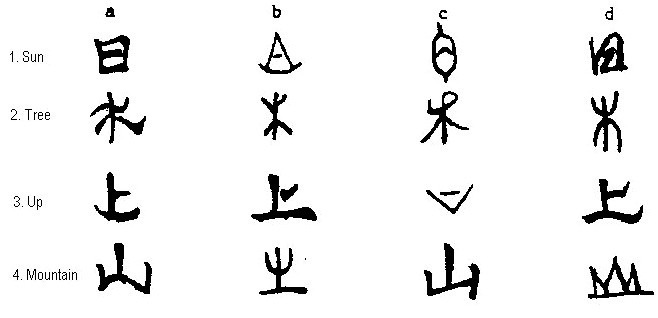
a. Regular b. Oracle c. Sm. Seal d. Running
a. Clerical b. Oracle c. Running d. Sm. Seal
a. Gr. Seal b. Regular c. Oracle d. Clerical
a. Clerical b. Sm. Seal c. Regular d. Oracle
Classroom Exercise: Summary of Chinese Calligraphy
A. Fundamental Materials
- Brushes. Chinese brushes will often have bamboo handles but they are sometimes made from many other materials for example wood, ivory and porcelain. The brushes employed for calligraphy must have stiff tips. Most generally, these are manufactured from your hair of baby wolves. A sizable-size brush is simpler for that beginner to deal with. If Chinese brushes aren’t available, use Western-made paintbrushes (Number 12) which may be bought at any art supplies store.
- Paper. Coarse-textured, absorbent paper is required for practicing calligraphy. Blank newspaper is appropriate for that beginner so we recommend it within the traditional “grain-paper” since it is significantly less costly.
- Ink. Ink can be bought in two forms: liquid or stick. Grinding ink from your ink stick is laborious and time-consuming. We recommend that you simply buy the liquid ink (most generally imported from Japan and canned inside a plastic container) from your arts supplies store. This ink includes a rather dense consistency and it is simpler to make use of if diluted with water. Give each student (or set of students) a paper cup using the ink-water combination of one part ink to 4 or 5 parts water.
- Backing Paper. 3 or 4 sheets of newspaper ought to be placed directly under the newspaper practice sheet to avoid ink from seeping to the desk. Impress upon your students this ink is extremely indelible once it’s dried and they should don’t get it onto their clothing.
- Sink with cold flowing water. Following the calligraphy practice, clean the brushes by holding them, tips pointed downwards, within cold tap. Don’t rinse them under warm water because this would dissolve the glue store the brush hairs together.
- Stack of sponges. For cleanup.
An ideal way to show the strokes is perfect for the teacher to attract them around the blackboard utilizing a brush and plain water. Tell the scholars to look at each stroke done around the blackboard prior to trying it on their own practice sheets.
The scholars ought to be sitting down so that every one includes a obvious look at the board. School desks arranged in vertical rows aren’t ideal for this function. If at all possible, ask them to spend time at lengthy tables arranged inside a “U” shape, facing the board.
Just like in learning how to play a guitar or perhaps a sport, there’s a method to become mastered in mastering Chinese calligraphy. The next exercises will familiarize a student with coping with brush and let him/her for doing things effectively.
Dip the underside 1 / 2 of the comb in ink and, holding it loosely, make different types of shapes by using it: zigzags, curves, dashes, and dots. Try exactly the same shapes using the brush held tightly. Would you use whatever improvement in the way the lines come out?
What is the improvement in the lines soon after the comb is drizzled with ink and then if this has run drier? Let’s say you vary the rate of the writing?
You might have observed that the arm grew to become tense whenever you held the comb tightly. You will notice that you will find the best charge of your lines whenever you contain the brush rather firmly but keep the arm relaxed.
When freshly drizzled with ink, the comb goes more easily within the paper and convey clearer shapes than when it is drier. Should you load the comb with an excessive amount of ink, however, your lines will start to disseminate in blotches around the absorbent paper.
The majority of you most likely made the lines at comparable speed while you would sign your company name. Attempt to write more gradually as this gives you best control of the direction from the brush.
Write your initials (in script, not printed form) by pressing lower at the beginning of each initial and progressively lifting the comb while you arrived at the finish from the letter. Make sure to make each initial in a single, slow, continuous movement. Now, turn back technique. Begin each letter with the purpose of the comb gently touching the paper and progressively press lower onto it while you continue the letter.
Compare the 2 teams of initials. In Chinese calligraphy it is important to have the ability to vary the width from the strokes by simply applying just a little pressure towards the brush. If your lines are too wide at some point or too small at another it can’t be “touched up” since the remedied area can have more dark compared to original stroke when the ink has dried. This is grounds that every stroke must be carried out in one continuous movement.
Write just one horizontal line over the paper, alternately pressing and raising the comb. Now check it out holding your hands about 4 inches over the paper (you’ll have to contain the brush farther from its tip this time around).
You most likely felt awkward on paper with no support for the hands as well as in getting to carry the comb farther from its tip than you normally hold a Western writing utensil. This process, however, provides you with better leverage around the brush and since it can make you are writing together with your arm and not simply your wrist and fingers, your brushstrokes could be more lively and powerful.
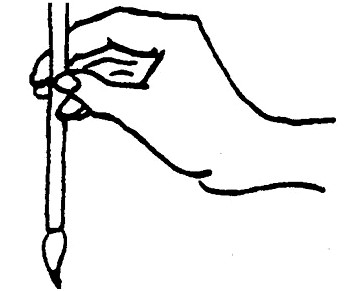
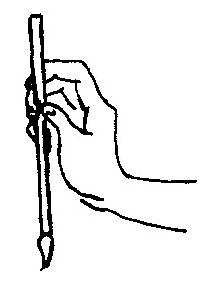
Keep the comb inside a strictly vertical position. Now, write the horizontal line from Exercise #3 (above) once again.
By holding the comb by doing this, strictly upright, you should use the whole tip from the brush whenever you write as opposed to just along side it from it as whenever you hold it just like a pen or pencil. Have you noticed that what exactly in which you pressed lower in your brush this time around tend to be more distinct that within the lines of Exercise #3?
Note: When the students think it is too hard initially to create with no support, ask them to placed their left hands under their right wrist for everyone as support.
C. Practicing To Achieve Perfection
There are just eight different types of strokes in Chinese calligraphy! Every character consists of a number of these strokes.
Stroke One: The Horizontal
a. Place your brush around the paper, press lower at the beginning of the stroke.
b. Raise your brush slightly while you draw it toward the center of the stroke.
c. Press lower again in the finish from the stroke.
You’ve just made the amount “one” in Chinese! Now make figures “two” and “three.”
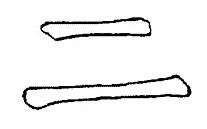
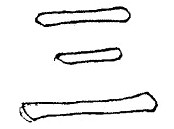
Now, you’ve also learned the very first rule of stroke order — the top end from the word ought to be written prior to the bottom level.
Stroke Two: The Vertical
The Vertical is made from exactly the same movements because the Horizontal.
a. Place your brush around the paper, press lower at the beginning of the stroke.
b. Lift the improve slightly while you draw it downward to the center of the stroke.
c. Press lower again in the finish from the stroke.
Let us try some mixtures of vertical and horizontal strokes.
Now, you’ve learned the 2nd rule of stroke order: Write the left-hands a part of a personality prior to the right-hands part.

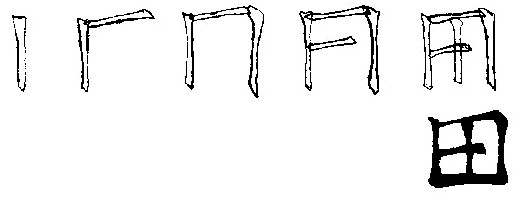

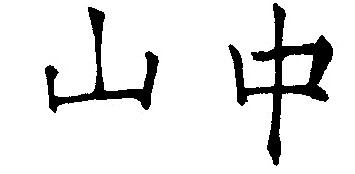
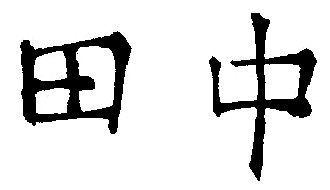
Stroke Three: The Us dot
The us dot is essentially pie. First, gently touch the comb towards the paper, then press lower and produce the improve again. For those who have trouble making the final corner from the triangular, draw the comb around it as being proven below.
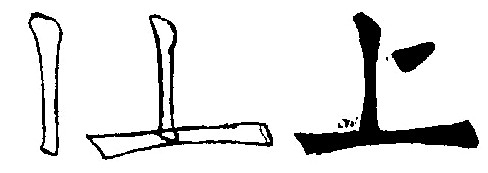
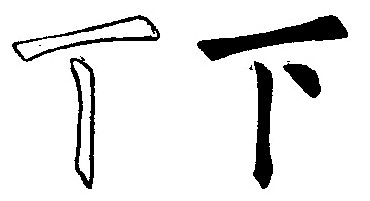
Stroke Four: The Left-Slant
This stroke is made of the very best to the low left. Lift the comb while you pull it left so the stroke will end up progressively thinner. Obviously, make sure to press lower at the beginning of the stroke in order that it will start having a wide top.
Stroke Five: The Best-Slant
This stroke is made of the very best left towards the lower right. Progressively put more pressure around the brush so the finish is going to be broad. Then, in the very finish, lift the end to create a point.

Stroke Six: The Hook
This is just a vertical stroke having a leftward point around the finish. Press lower at the beginning of the stroke, lift in the middle and press lower again in the finish. Now that you’ve got arrived at the cheapest reason for the stroke, lift the comb so the tip barely touches the paper, press lower and progressively pick up to help make the tapering finish.
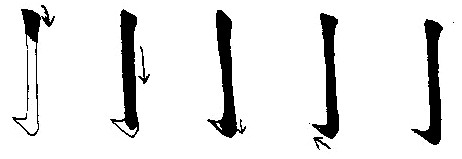

Stroke Six: The Lower-Slant
This stroke is made of to left, becoming thinner. Press lower in the beginning at the beginning of the stroke and progressively lift the comb to some extent.
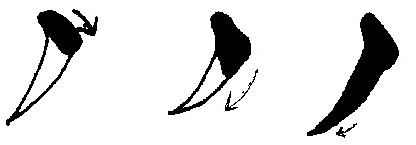
Stroke Six: The Up-Slant
This really is built the same way because the Lower-Slant, but don’t forget that you are pointed in the other direction, from left to right.

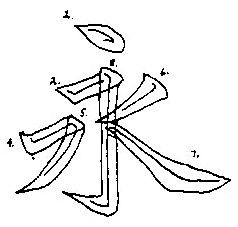
Classroom Exercise: Chinese Calligraphy, the Figures one to ten
This continues to be made to accompany the opening calligraphy exercise, above. It is also utilized by students who’ve been uncovered towards the Oriental and writing system with the suggested resource, Demystifying china Language.
Practice pages for writing china figures for that figures one through ten might be downloaded below (click the picture of several to download the practice page for your number). The web pages could be printed and given to the scholars.
Students should use medium bamboo calligraphy brushes. A combination of block printing ink and water is effective instead of solid ink and inkstones, which may be impractical for any large class. Special attention ought to be compensated towards the proper position from the brush and also the hands, along with the stroke order of every character. Brushes ought to be held verticle with respect towards the paper, between your thumb and first three fingers. The stroke order from the figures is shown by the dotted lines alongside each character.
Possess the students practice the positioning by holding dry brushes and moving the arm and wrist. Then ask them to practice making vertical and horizontal lines on scrap paper before trying to perform the exercises within this lesson. (Begin to see the previous exercise for additional on fundamental materials and brush techniques.)
Suggested Website: USC Chinese Group Character Project [College of Los Angeles]
[ http://www.usc.edu/dept/ealc/chinese/character/output/]
The animations on this web site might be helpful along with this figures exercise.
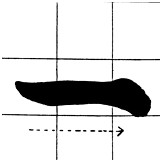
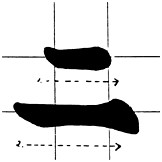
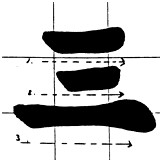
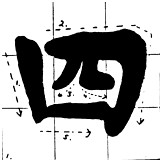
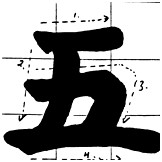

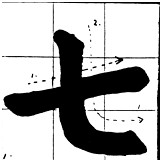
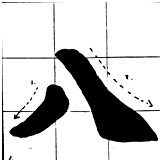
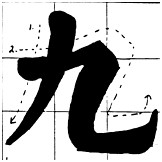
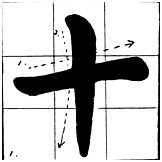
the character for ten 十
combined with character for 2 二
which would be to say, 2 x 10
which would be to say, 2 x 10 + 1
Acknowledgement: The kodak playtouch camcorder was ready for the East Asia Study Center in the College of Arizona by Caryn M. White-colored.
Source: afe.easia.columbia.edu